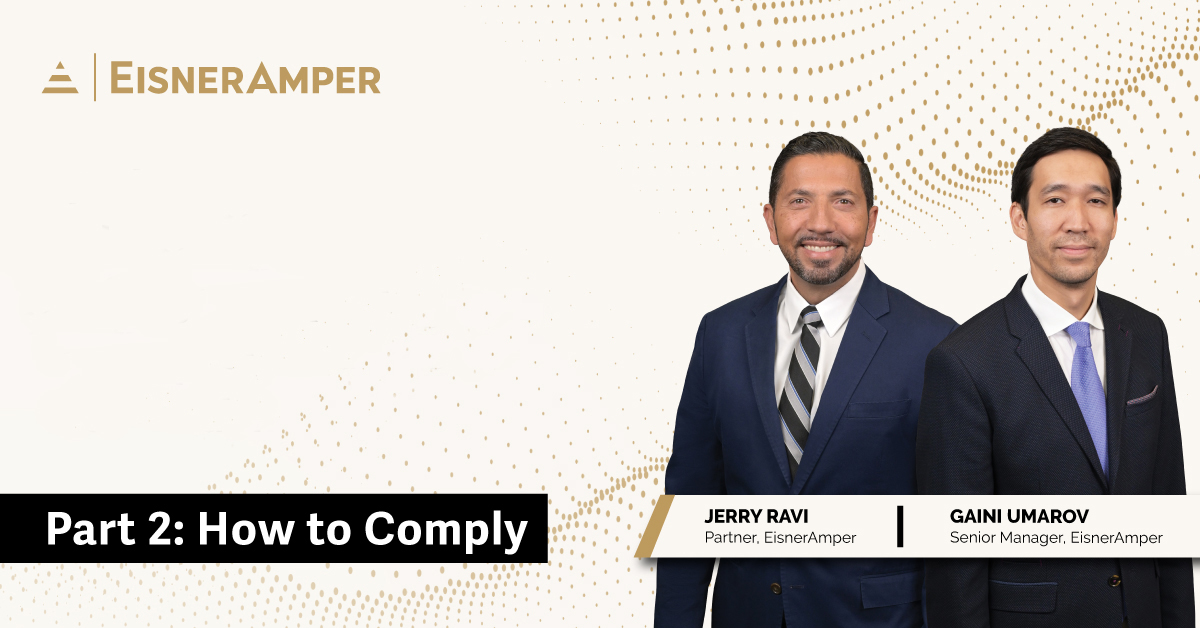Capital Formation: SEC’s New Rules on Regulation A+
- Published
- Dec 28, 2015
- Topics
- Share
Introduction
As required by Section 401 of the Jumpstart Our Business Startups Act (“JOBS Act”) and in an attempt to facilitate smaller companies obtaining access to capital, the SEC adopted new rules in March 2015 which became effective on June 19, 2015. These new rules, often referred to as Regulation A+, update and expand the existing Regulation A, which governs the exemption from registration of the offer and sale of certain securities. Regulation A was an exemption from registration that allowed an unregistered public offering up to a maximum of $5 million in a 12-month period.
Amendments
The changes address, in part, 2 aspects of the previously existing Regulation A that limited the use of this exemption. These were:
- The previous cap on the size of a qualifying offering (was only $5 million); and
- These offerings were subject to regulation and potential review by individual states (“blue sky laws”), which meant that an entity had to potentially comply with regulations and undergo a review process by many regulatory bodies.
The new adopted rules established a 2-tier system:
Tier 1
Includes the existing Regulation A permitting companies to sell stock without having to comply with the SEC’s general registration requirements up to a maximum of $20 million of stock offering in a 12-month period, up from the previous maximum of $5 million. These offerings under Tier 1 must be filed and fees paid in every state in which the company is selling pursuant to state blue sky laws.Tier 2
Permits companies to offer securities and raise capital up to a maximum of $50 million in a 12-month period without having to comply with the SEC’s general registration requirements. In addition the offering is exempt from most individual state’s regulation and review. Under Tier 2 offerings, companies will be required to provide audited financial statements along with the offering, in addition to filing annual and semi-annual financial statements (including certain reduced disclosures) and certain current event reporting
Offerings under both tiers are subject to basic requirements including issuer eligibility, disclosure, and other matters from existing Regulation A. Offerings under both tiers would allow companies to: (1) submit draft offering statements for non-public review by the SEC staff before filing, (2) continue to use solicitation of materials after filing the offering statement, (3) require the electronic filing of offering materials, and (4) align Regulation A with current practice for registered offering.
Matters to Consider
The exact impact that these amendments will have on capital formation is still yet to be determined. However, here are some things to consider regarding Regulation A+:
- Market participants are often able to utilize regulatory changes in creative ways. We’ve seen this recently with crowdfunding, which was never a direct intention of the JOBS Act.
- The amendments specifically relate to the primary issuance of securities and fail to address secondary markets.
- The financial reporting requirements for Tier 2 offerings may prove to be costly for many entities.
- With the exception of raising the cap to $20 million, the impact of the changes on Tier 1 issuers appears to b rather limited. Most notably, Tier 1 issuers will continue to have to comply with the various blue sky laws as well as the SEC’s review.
- Capital raises of $5 million or less received little in the way of relief. The continued costs of state qualification will likely continue to discourage such small raises.
In Conclusion
While there is still room for improvement, the changes to Regulation A appear to be a step in the right direction and will hopefully help reduce the costs and complexity of raising capital in the United States.
While outside the scope of Regulation A, IPOs indicate a U.S. market that has been slowing during the first three quarters of 2015 (down 37% from the first three quarters of 2014) as foreign markets (particularly Asia) are dominating the IPO market place. For the first half of 2015, North America comprised only 17% of global IPOs and 21% of the total value of global IPOs. As such, efforts that make it easier for entities to raise capital in the U.S. will largely be welcomed.
Lastly, while Regulation A+ relaxes some of the regulatory burden, raising capital in this manner will continue to be complicated. With fewer restrictions come additional disclosure requirements. As always, it is therefore important to consult with a knowledgeable legal advisor in order to ensure that the raise is conducted in a manner compliant with securities regulations.
What's on Your Mind?
Start a conversation with the team
Receive the latest business insights, analysis, and perspectives from EisnerAmper professionals.













